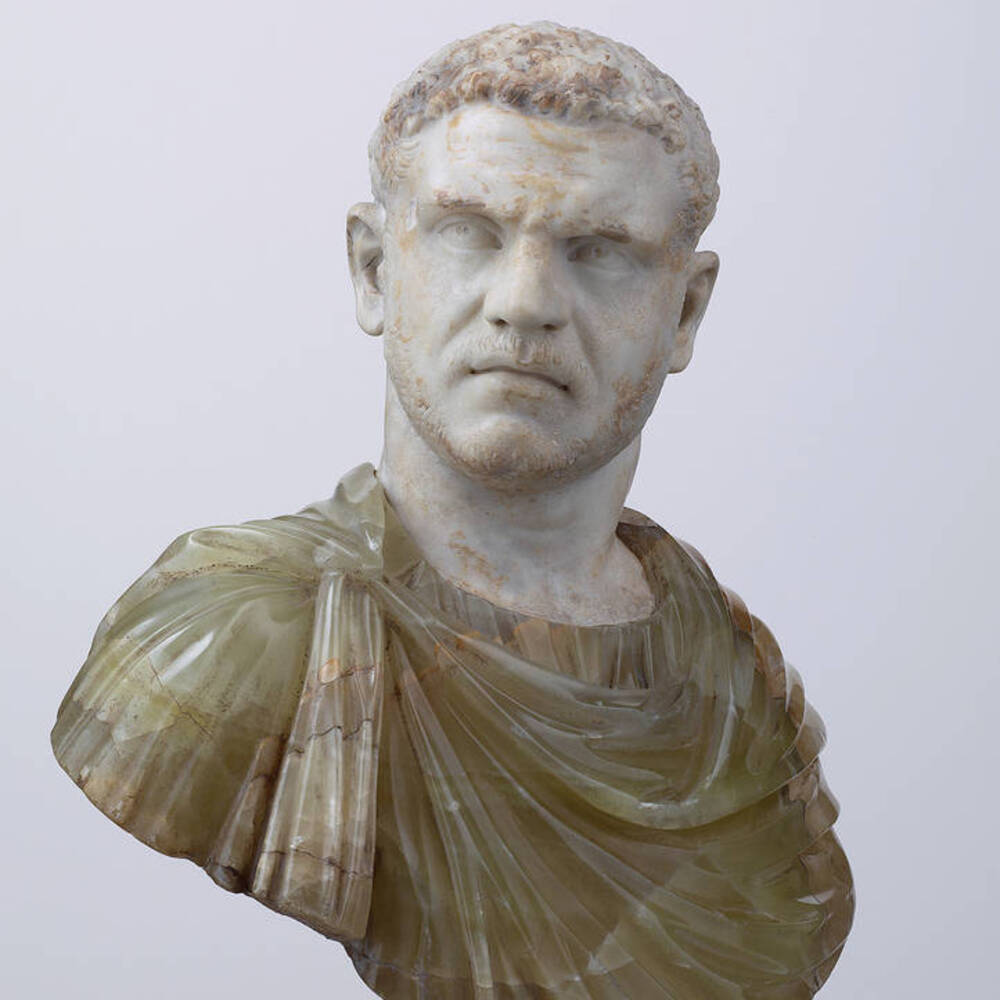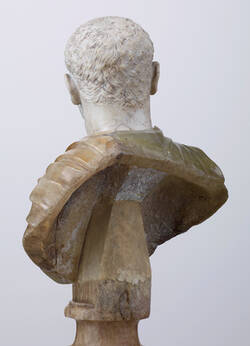Caracalla was Roman Emperor only for six years (211 – 217 CE), but during his reign he had an astonishingly large number of portrait sculptures made of himself. Most of the portraits are based on a life-size portrait bust that the Emperor himself must have authorised, in which he is depicted with a sinister gaze and a sideward turn of the head. – The Dresden head is remarkable for its format, which is unusually small for an emperor.
Further Media




Caracalla ushered in a period of extreme cruelty in the Roman Empire. Caracalla’s father was Septimius Severus, who died in 211. Septimius was succeeded by his two sons Caracalla and Geta as co-emperors. But just a few months later, Caracalla had his younger brother Geta murdered and instigated massacres of thousands of his brother’s followers across the Empire. From then on, Caracalla ruled as the sole emperor.
To try and gain the approval of his subjects, he ordered Rome to construct the vast Baths of Caracalla – whose ruins can still be admired in the city today. Accommodating over 1,500 people, the baths were a vast complex of heated baths, shops, libraries and gardens – and all that with free admission!
Caracalla also granted Roman citizenship to all free men throughout the Empire, a status which brought many privileges. In this way, he encouraged the integration of conquered peoples and fostered the dissemination of Roman culture. Caracalla’s father Severus was from the region of today’s Libya, but Caracalla was born in what is now Lyon. The Roman Empire really was a world power!
He was born Lucius Septimius Bassianus, but was nicknamed Caracalla after the Gallic-style hooded tunic he loved to wear. Caracalla was assassinated after just six years as emperor.
- Location & Dating
- c. 215 CE
- Material & Technique
- Marble
- Dimenions
- H: 54,0 cm, B: 37,5 cm, T: 19,0 cm
- Museum
- Skulpturensammlung
- Inventory number
- Hm 402